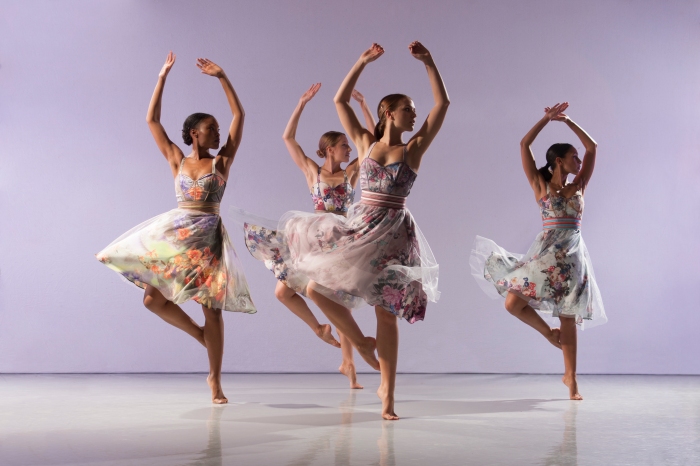DANCE
By Mark Brown
Richard Alston Dance Company
Festival Theatre, Edinburgh
At Theatre Royal, Glasgow, November 22

If you crossed Marius Petipa, the great choreographer of 19th-century classical ballet, with Pina Bausch, the mother of avant-garde modernist dance, you would be likely to get an artist very much like Richard Alston. An elder statesman of contemporary dance, Alston’s work is characterised by balletic grace and drama on the one hand, and a stark, modernist abstraction on the other.
The latest UK tour by Richard Alston Dance Company (RADC), which opened in Edinburgh and closes in Glasgow, offers a superb window into the diversity and continuity of the choreographer’s work. Entitled Mid Century Modern, it celebrates Alston’s 50 years as a creator of dance works.
The show opens, appropriately enough, with seven fragments of choreographies created by Alston throughout his career, and restaged by RADC’s associate choreographer Martin Lawrance. These include the very modern, pointeless ballet (i.e. ballet without pointes) of Rainbow Bandit (1977), a memorable ensemble work of dynamic, architectural angularity. The piece owes a debt, Alston explains, to his youthful studies in New York, and to the work of American dance luminaries Merce Cunningham and Trisha Brown in particular.
This vignette gives way to Blue Schubert Fragments (1972), a contemplative choreography in which an ensemble costumed in monochrome dances in shapes that are elegantly human, yet gently mechanical. Set to the adagio from Death and the Maiden, the movements of the piece appear intriguingly causational, as if one leads to the next.
The programme is testament to the inspiration Alston has always taken from the canon of European classical music. In addition to the Schubert, the production also includes pieces set to works by Monteverdi, J.S. Bach, Ravel, Handel and Brahms.
The first of three parts of this programme, Lawrance’s homage to Alston’s half-century of choreography, closes with Signal of a Shake (1999). Danced to music by Handel, this balletic piece is playful and quirkily humorous, nodding respectfully to folk culture while its varying pas-de-deux give way to a joyful company dance.
As if we needed a reminder of the breadth of musical inspiration taken by RADC, Lawrance’s new choreography Detour is performed to the extraordinary percussive music of the album Timber Remixed by American composer (and founder member of the Bang on a Can collective) Michael Gordon. The movement itself exhibits an impressive tension and dramatic urgency.
The modernist music continues in Alston’s Proverb (2006), a work of gorgeous geometry in which bodies combine with, pass and replace each other with charming and emotive poise. Its exquisite series of thoughtful, verging on meditative repetitions and variations is a perfect partner to the musical composition (also entitled Proverb), an almost sacred piece in voices and percussion by great American minimalist composer Steve Reich.
If there is a subtle expression of folk culture earlier in the programme, Brahms Hungarian, the new work which closes the show, is an unapologetic combination of contemporary dance with folk movement and imagery. The piece, which is choreographed by Alston, is danced to Brahms’s Hungarian Dances for solo piano (which are performed live, and splendidly, on a baby grand by Jason Ridgway).
The female dancers perform in floral dresses by designer Fotini Dimou which are clearly inspired by the folk costumes of rural Magyar culture. As, courtesy of lighting designer Zeynep Kepekli, the set’s naked wall goes through a series of colour changes, one can’t help but muse on how confused this work would make the rulers of Hungary past and present.
The Soviet-style Communist regime that ruled the country between 1945 and 1989 would have welcomed the folk elements (which the Stalinists championed as a populist counterweight to western influence). However, they would, one suspects, have hated the freedom, female self-assertion and humour of Alston’s modernist dance. Hungary’s current, increasingly fascistic Prime Minister, Viktor Orban, would, I’m sure, feel pretty much the same.
This review was originally published in The Herald on Sunday on October 7, 2018
© Mark Brown